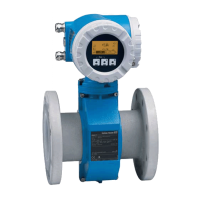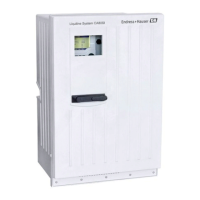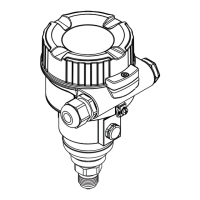Diagnostics and troubleshooting Gammapilot FMG50
88 Endress+Hauser
A0040223
24 Influence of gammagraphy on radiometric measurements
1 Interference radiation
8.6.2 Reaction to detected gammagraphy radiation
If the gammagraphy criterion "gammagraphy limit" is met, the device output adopts a value
defined by the user (Gammagraphy detection parameter). Furthermore, a warning is also
signaled. After a maximum time defined by the user (Hold time parameter), an alarm
current is output and an event is displayed (can be selected via the Gammagraphy
detection parameter).
Gammagraphy detection is also available with modulated radiation.
If the Heartbeat option is available, the number of detected gammagraphy events and
the total duration of the detected gammagraphy events are available in the Heartbeat
Verification Report.
8.6.3 Gammagraphy detection limits and behavior in event of
excess radiation
Gammagraphy detection is active in the permitted radiation range of the device, i.e. up to
≤65000 cnt/s. The accuracy of the device can be guaranteed within this range such that
the device is ready to measure again immediately once the gammagraphy event no longer
applies.
Above the permitted radiation range, an excess radiation alarm is signaled after 1 s
(diagnostic number 927), irrespective of the settings for gammagraphy detection. The
current output is always set to failure current during the excess radiation alarm.
To protect the photomultiplier tube, the high-voltage supply for the tube is switched off
while the excess radiation alarm is active and cyclically switched back on again in order to
check the radiation intensity. The pause time during which the tube is switched off is 60 s.
Therefore the end of a period of excess radiation can be detected after 60 s at the very
earliest. When the excess radiation ends, the supply voltage is readjusted. As a result, in
addition to the pause time approximately 30 s are also needed until the sensor signal
leaves the alarm state.
By cyclically switching off the high-voltage, excess radiation can be present for
arbitrarily long periods of time without this affecting the operating life of the
photomultiplier or the device overall.

